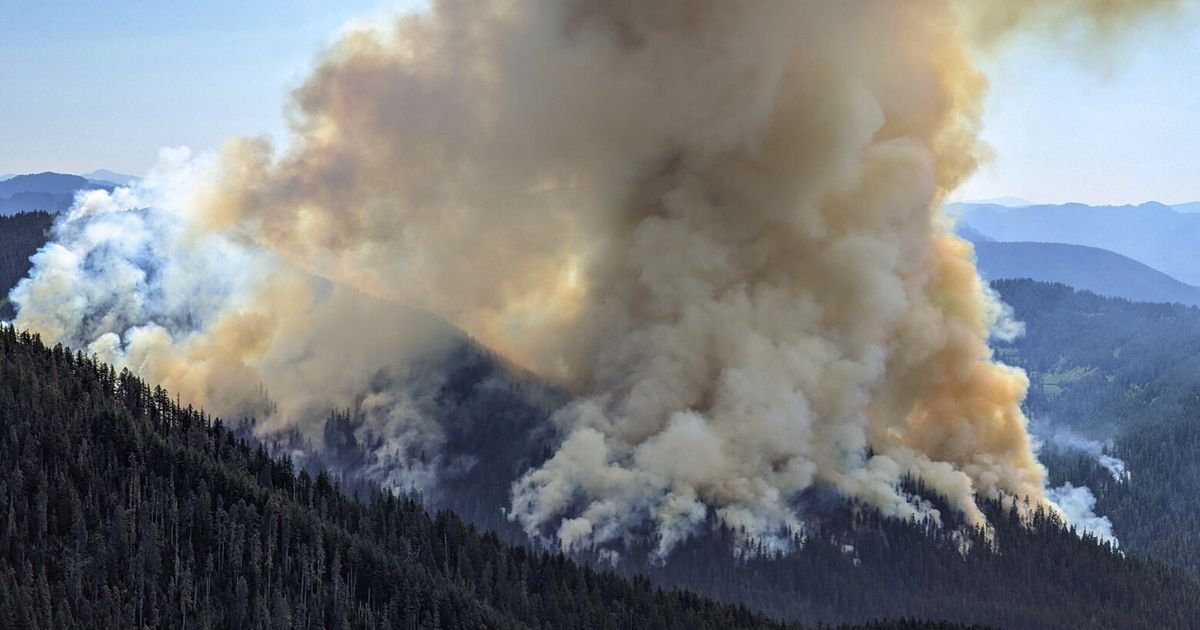Decades of research burned in Oregon forest. What will scientists learn?
Decades of research burned in this Oregon forest. Now it could hold ... The Seattle Times



CORVALLIS, Ore. – Fire Ravages HJ Andrews Experimental Forest, Threatening Decades of Research
On August 5, a single lightning strike ignited a fire in the heart of the HJ Andrews Experimental Forest, located in the Cascade Mountains southeast of Corvallis. Robert Mutch, a fire lookout for the U.S. Forest Service, immediately recognized the severity of the situation. The Andrews Forest, spanning nearly 16,000 acres, is known for its biodiversity and old-growth forest, making it a crucial research site for scientists from around the world. This major blaze has forced the closure of the forest and evacuation of its headquarters.
The Importance of Long-Term Research
The Andrews Forest, established in 1948, serves as a living laboratory for ecological research. Over the past 75 years, scientists have collected extensive data on various aspects of the forest ecosystem. Unlike most ecological studies that last only a few years, researchers at the Andrews have been able to study tree growth and death, fish populations, and climate patterns for several decades. This long-term data provides a valuable baseline for understanding environmental change and measuring the impact of the recent wildfire.
The Devastating Effects of the Fire
The Lookout fire, which is still burning, has had a significant impact on the forest. Approximately 40% of the forest consists of old-growth trees, some of which are hundreds of years old. While large trees are more resistant to burning, the severity of the fire will vary across the landscape. The firefighting efforts have also caused damage to the forest. Despite these challenges, scientists are eager to study the aftermath of the fire and observe natural regeneration processes.
Emotional Toll on Researchers
The destruction caused by the fire has taken an emotional toll on researchers who have dedicated their lives to studying the Andrews Forest. Many scientists feel a deep sense of grief and loss as they witness the destruction of a place they hold dear. The fire has not only impacted their research but also the rich arts and humanities program that utilizes the forest as a source of inspiration.
Future Challenges and Opportunities
As the fire continues to burn, Andrews scientists are currently unable to access the forest. They face the daunting task of assessing the damage, salvaging valuable equipment and data, and planning for future research. While some experiments may be terminated due to the fire, there is hope that new opportunities for study will arise from this devastating event.
Conclusion
The wildfire at the HJ Andrews Experimental Forest has had a profound impact on both the ecosystem and the researchers who have dedicated their careers to studying it. The long-term data collected at the Andrews Forest has provided invaluable insights into environmental change, making it a critical site for understanding the effects of wildfires. As scientists begin to assess the damage and plan for the future, the Sustainable Development Goals (SDGs) serve as a guiding framework for their efforts to restore and protect this unique ecosystem.
SDGs, Targets, and Indicators
SDG 15: Life on Land
- Target 15.1: By 2020, ensure the conservation, restoration, and sustainable use of terrestrial and inland freshwater ecosystems and their services, in particular forests, wetlands, mountains, and drylands, in line with obligations under international agreements.
- Indicator 15.1.2: Proportion of important sites for terrestrial and freshwater biodiversity that are covered by protected areas, by ecosystem type.
SDG 13: Climate Action
- Target 13.1: Strengthen resilience and adaptive capacity to climate-related hazards and natural disasters in all countries.
- Indicator 13.1.2: Number of countries that have integrated mitigation, adaptation, impact reduction, and early warning into primary, secondary, and tertiary curricula.
SDG 4: Quality Education
- Target 4.7: By 2030, ensure that all learners acquire the knowledge and skills needed to promote sustainable development, including, among others, through education for sustainable development and sustainable lifestyles, human rights, gender equality, promotion of a culture of peace and non-violence, global citizenship, and appreciation of cultural diversity and of culture’s contribution to sustainable development.
- Indicator 4.7.1: Extent to which (i) global citizenship education and (ii) education for sustainable development (including climate change education) are mainstreamed in (a) national education policies; (b) curricula; (c) teacher education; and (d) student assessment.
Analysis
1. The issues highlighted in the article are connected to SDG 15 (Life on Land), SDG 13 (Climate Action), and SDG 4 (Quality Education). The article discusses the impact of the fire on the forest ecosystem, the need for resilience and adaptation to climate-related hazards, and the importance of education for sustainable development.
2. Specific targets under these SDGs that can be identified based on the article’s content are:
– Target 15.1: Conservation, restoration, and sustainable use of terrestrial and inland freshwater ecosystems.
– Target 13.1: Strengthening resilience and adaptive capacity to climate-related hazards.
– Target 4.7: Acquisition of knowledge and skills needed to promote sustainable development.
3. The article mentions or implies indicators that can be used to measure progress towards the identified targets:
– Indicator 15.1.2: Proportion of important sites for biodiversity covered by protected areas.
– Indicator 13.1.2: Integration of mitigation, adaptation, impact reduction, and early warning into education curricula.
– Indicator 4.7.1: Mainstreaming of global citizenship education and education for sustainable development in national policies, curricula, teacher education, and student assessment.
4. Table:
| SDGs | Targets | Indicators |
|——|———|————|
| SDG 15: Life on Land | Target 15.1: Conservation, restoration, and sustainable use of terrestrial and inland freshwater ecosystems | Indicator 15.1.2: Proportion of important sites for biodiversity covered by protected areas |
| SDG 13: Climate Action | Target 13.1: Strengthening resilience and adaptive capacity to climate-related hazards | Indicator 13.1.2: Integration of mitigation, adaptation, impact reduction, and early warning into education curricula |
| SDG 4: Quality Education | Target 4.7: Acquisition of knowledge and skills needed to promote sustainable development | Indicator 4.7.1: Mainstreaming of global citizenship education and education for sustainable development in national policies, curricula, teacher education, and student assessment |
Behold! This splendid article springs forth from the wellspring of knowledge, shaped by a wondrous proprietary AI technology that delved into a vast ocean of data, illuminating the path towards the Sustainable Development Goals. Remember that all rights are reserved by SDG Investors LLC, empowering us to champion progress together.
Source: seattletimes.com

Join us, as fellow seekers of change, on a transformative journey at https://sdgtalks.ai/welcome, where you can become a member and actively contribute to shaping a brighter future.







